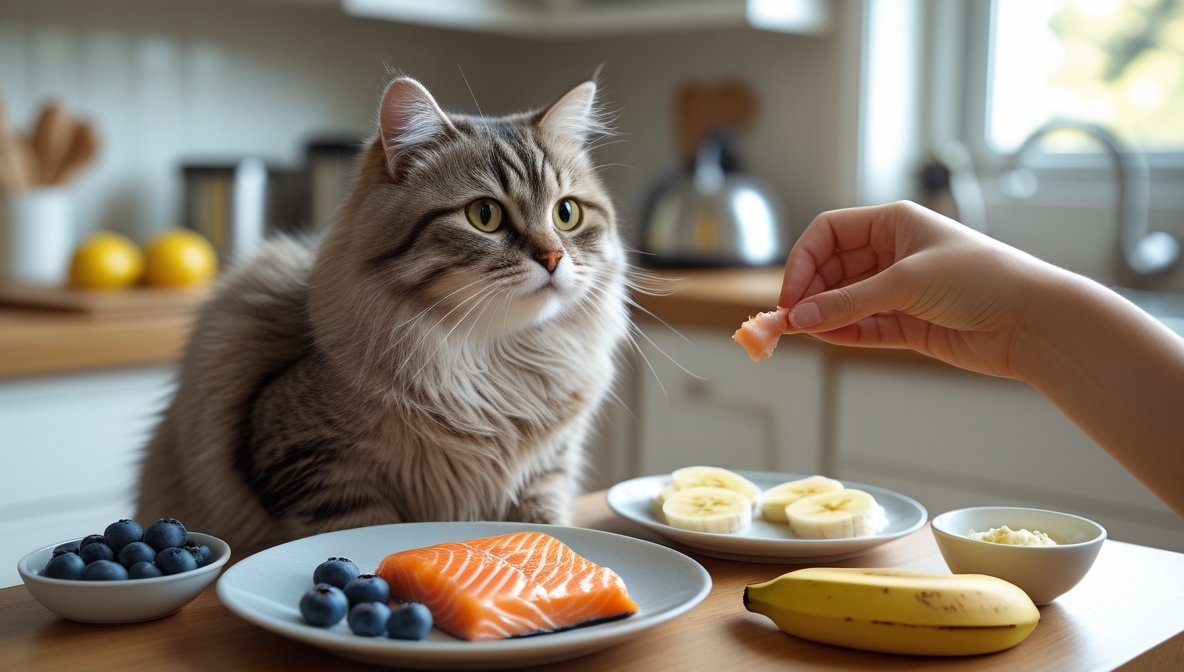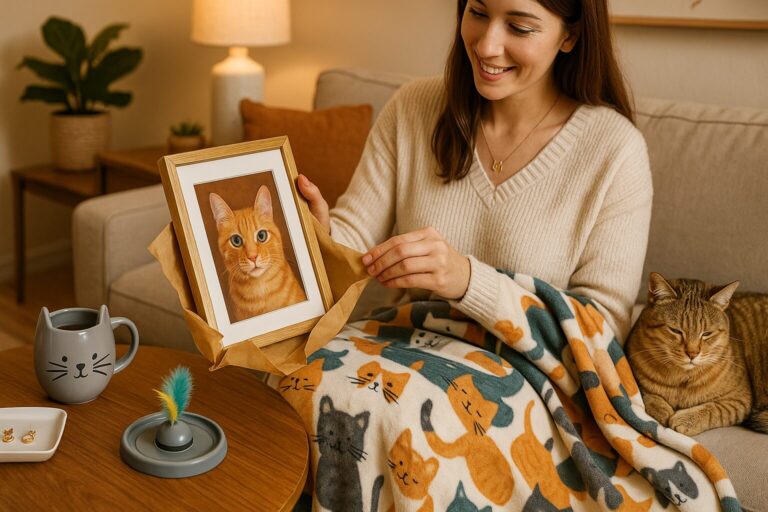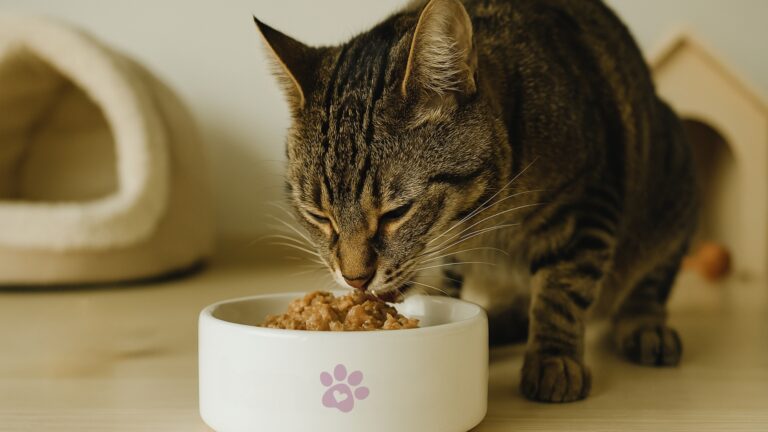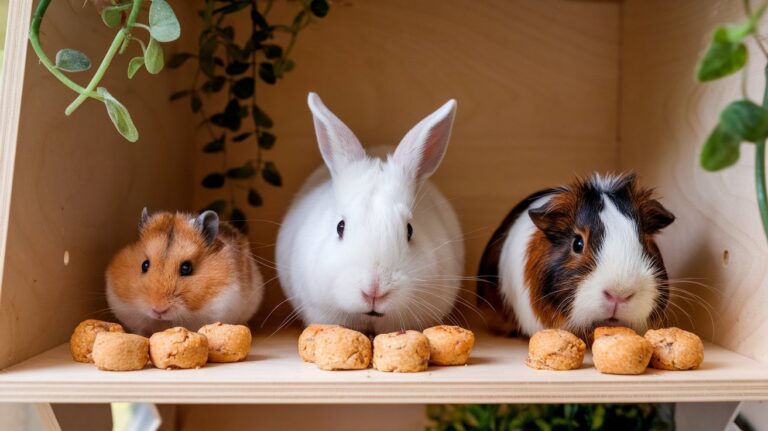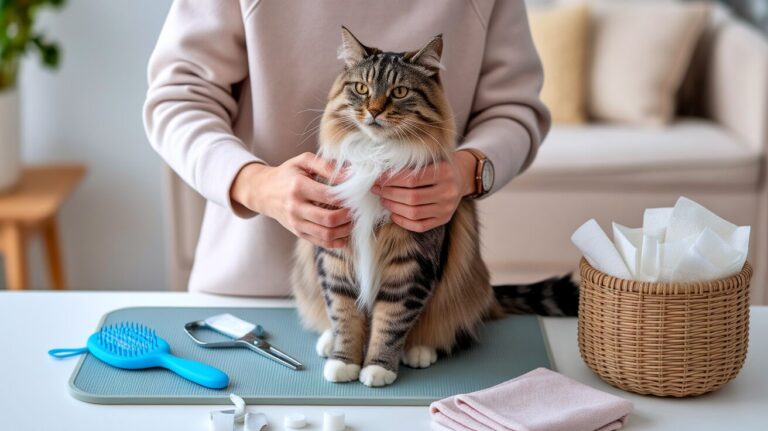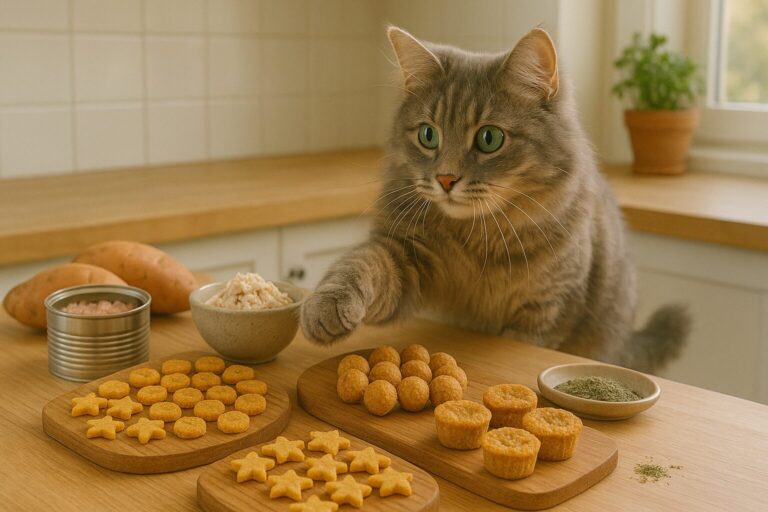15 Safe Human Foods for Cats and How to Serve Them!
Ever sat down with a snack only to find your cat staring at you like you owe them a bite? I know I have! My cat, Cookie, has a way of making me feel guilty for not sharing, even when I know certain foods aren’t good for her. But what about the ones that are?
I did some research (and checked with my vet) to find out exactly which safe human foods for cats can be shared in moderation. Turns out, there are quite a few! In this guide, I’ll walk you through 15 safe human foods for cats, how to serve them, and what to avoid. Let’s make snack time safe and fun for our feline friends!
General Guidelines for Feeding Cats Human Food
Before we get into the list, here are some golden rules I always follow when sharing human food with Cookie:
- Keep it plain – No spices, seasonings, butter, or sauces. Cats don’t need those extras.
- Treats, not meals – Human food is just a snack, not a replacement for their regular diet.
- Check ingredients – Some foods have hidden dangers, like garlic, onions, chocolate, or artificial sweeteners.
- Start small – Cats can have sensitive stomachs, so I always introduce new foods gradually.
If you keep these in mind, you’ll have a much easier (and safer) time sharing safe human foods for cats with your furry friend.
15 Safe Human Foods for Cats and How to Serve Them
1. Cooked Chicken
Why it’s good: High in lean protein to keep your cat strong and energetic.
How to serve: Boiled or baked, skinless, boneless, and unseasoned.
Personal tip: Cookie loves shredded chicken as a topper on her regular food.
2. Cooked Fish (Salmon, Tuna, Sardines)
Why it’s good: Packed with omega-3s, great for a healthy coat.
How to serve: Cooked, deboned, and in small amounts.
What to avoid: Raw fish—it can carry parasites and isn’t worth the risk.
3. Cooked Eggs
Why it’s good: Loaded with protein and essential vitamins.
How to serve: Scrambled or boiled, no butter or salt.
Fun fact: Some cats love eggs, while others turn up their noses—Cookie is on the fence.
4. Pumpkin (Plain, Cooked, or Canned)
Why it’s good: Amazing for digestion and hairball control.
How to serve: Small spoonfuls mixed into food.
My experience: I started giving Cookie pumpkin when she had mild constipation, and it worked wonders!
5. Blueberries
Why it’s good: Antioxidants help support brain and heart health.
How to serve: Fresh or frozen, whole or mashed.
What to expect: Some cats love them; others will look at you like you’re crazy.
6. Bananas
Why it’s good: A natural source of potassium and fiber.
How to serve: Tiny slices or mashed.
Personal note: Cookie sniffed a banana once and backed away dramatically. But some cats enjoy them!
7. Apples (Without Seeds or Skin)
Why it’s good: Provides fiber and vitamin C.
How to serve: Peeled and cut into small, bite-sized pieces.
Warning: Apple seeds contain cyanide—never let your cat near them.
8. Carrots
Why it’s good: Great for dental health and rich in vitamin A.
How to serve: Steamed or finely grated.
What I do: I mix a tiny bit into Cookie’s wet food when she’s being picky.
9. Green Beans
Why it’s good: Low in calories and full of fiber.
How to serve: Steamed and cut into small pieces.
Lesson learned: Don’t try to give them raw—Cookie acted like I had betrayed her.
10. Peas
Why it’s good: A plant-based protein source with vitamins.
How to serve: Cooked, mashed, or mixed into food.
What to avoid: Raw pea pods—they’re tough to digest.
11. Cheese (In Small Amounts)
Why it’s good: High in calcium and protein.
How to serve: Tiny bits of cheddar or mozzarella.
What to watch for: Some cats are lactose intolerant, so test a small amount first.
12. Plain Yogurt (Unsweetened)
Why it’s good: Probiotics help with digestion.
How to serve: A small spoonful as an occasional treat.
Cookie’s review: She sniffed it, took a tiny lick, and walked away. So, results may vary!
13. Oatmeal
Why it’s good: High in fiber and gentle on the stomach.
How to serve: Cooked with water (never milk!).
Pro tip: A teaspoon mixed into wet food can be a good fiber boost.
14. Rice (Plain and Cooked)
Why it’s good: Can help soothe upset stomachs.
How to serve: Mixed with a little cooked chicken.
What to avoid: Fried or seasoned rice.
15. Watermelon (Seedless)
Why it’s good: Hydrating and packed with vitamins.
How to serve: Small, seedless chunks.
Warning: Seeds and rind can cause digestive issues, so keep them out.
Human Foods Cats Should Avoid
Some foods can be toxic to cats. Never feed your cat:
- Onions & Garlic – Causes anemia.
- Chocolate & Caffeine – Harmful to their nervous system.
- Grapes & Raisins – Can cause kidney failure.
- Dairy (Milk & Ice Cream) – Most cats are lactose intolerant.
- Alcohol & Artificial Sweeteners (Xylitol) – Extremely toxic.
Signs of Food-Related Distress in Cats
If you give your cat a new food and notice any of these symptoms, stop immediately and call your vet:
- Vomiting or diarrhea
- Lethargy
- Excessive drooling
- Loss of appetite
Final Thoughts – Keep It Safe and Balanced!
Feeding your cat safe human foods for cats can be fun, but moderation is key. Their main diet should still be high-quality cat food, with human treats as an occasional bonus. Always introduce new foods slowly and watch for any reactions.
I’d love to hear from you—have you ever shared safe human foods for cats with your cat? What was their reaction? Let me know in the comments!

